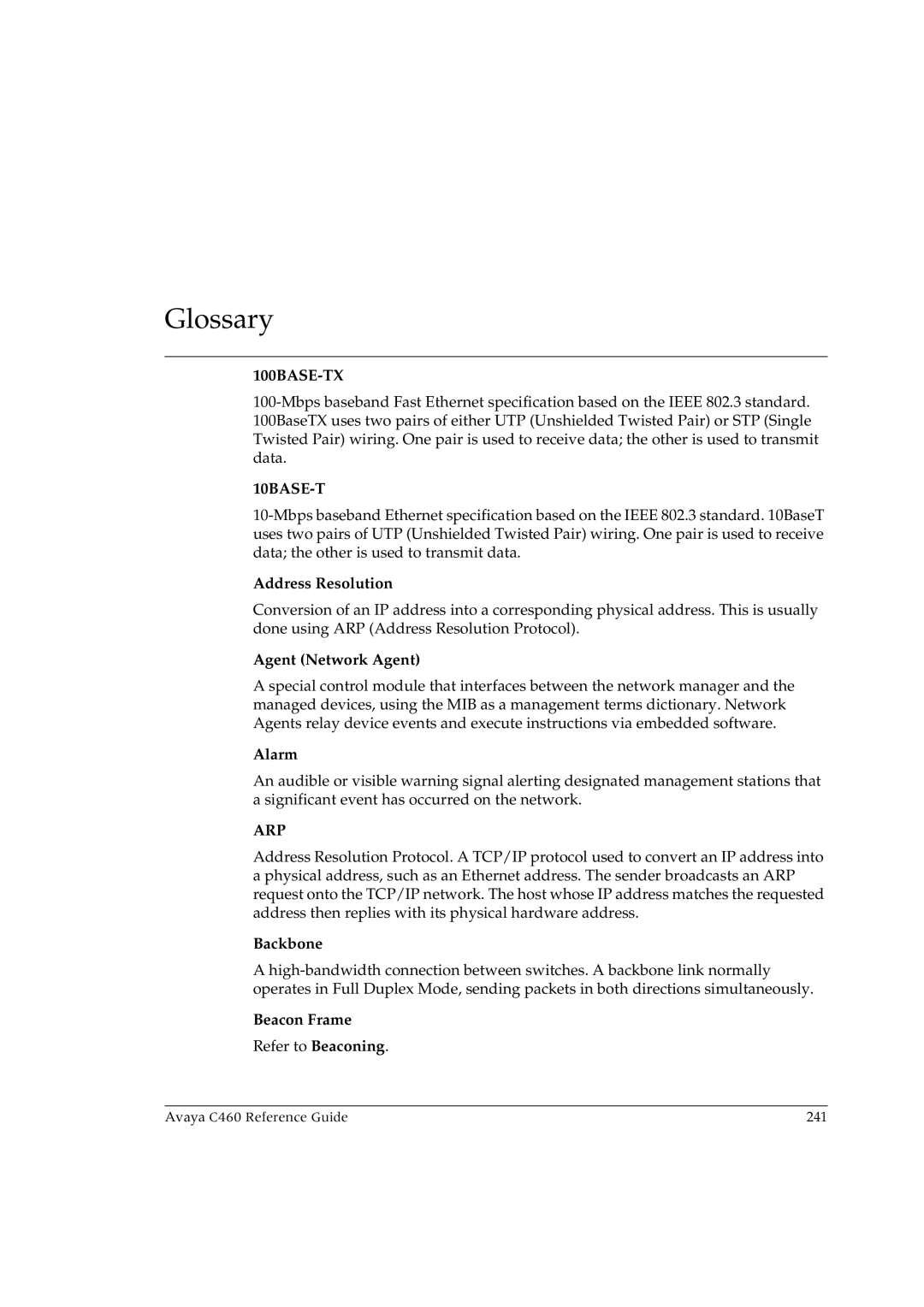
Glossary
100BASE-TX
10BASE-T
Address Resolution
Conversion of an IP address into a corresponding physical address. This is usually done using ARP (Address Resolution Protocol).
Agent (Network Agent)
A special control module that interfaces between the network manager and the managed devices, using the MIB as a management terms dictionary. Network Agents relay device events and execute instructions via embedded software.
Alarm
An audible or visible warning signal alerting designated management stations that a significant event has occurred on the network.
ARP
Address Resolution Protocol. A TCP/IP protocol used to convert an IP address into a physical address, such as an Ethernet address. The sender broadcasts an ARP request onto the TCP/IP network. The host whose IP address matches the requested address then replies with its physical hardware address.
Backbone
A
Beacon Frame
Refer to Beaconing.
Avaya C460 Reference Guide | 241 |
